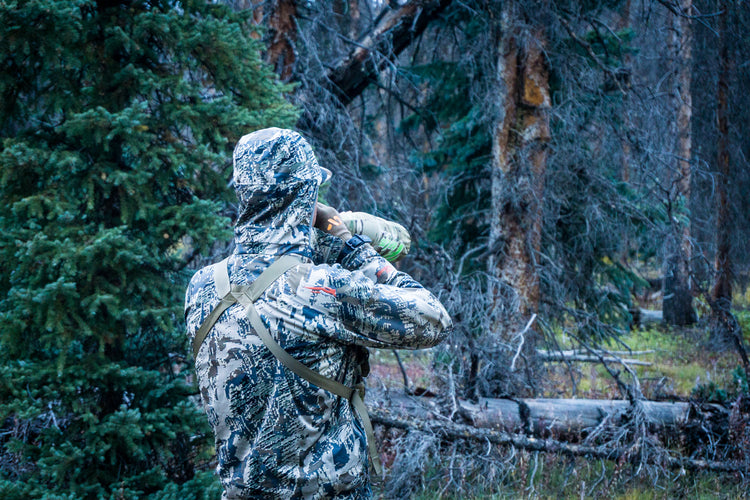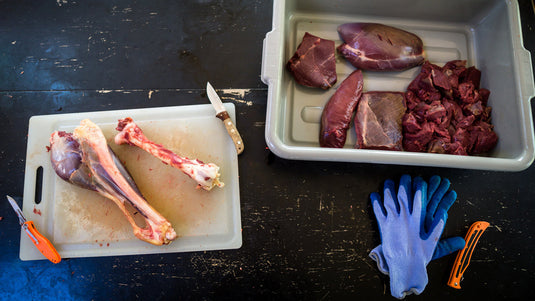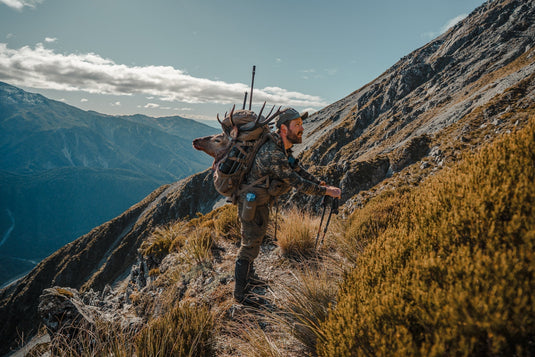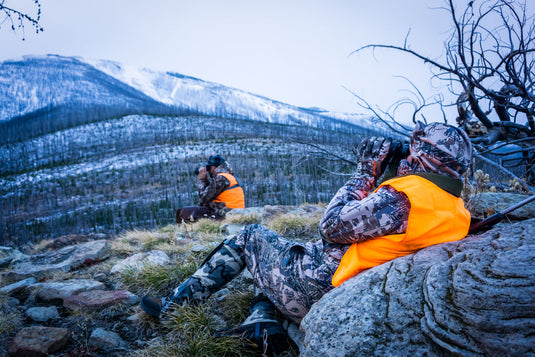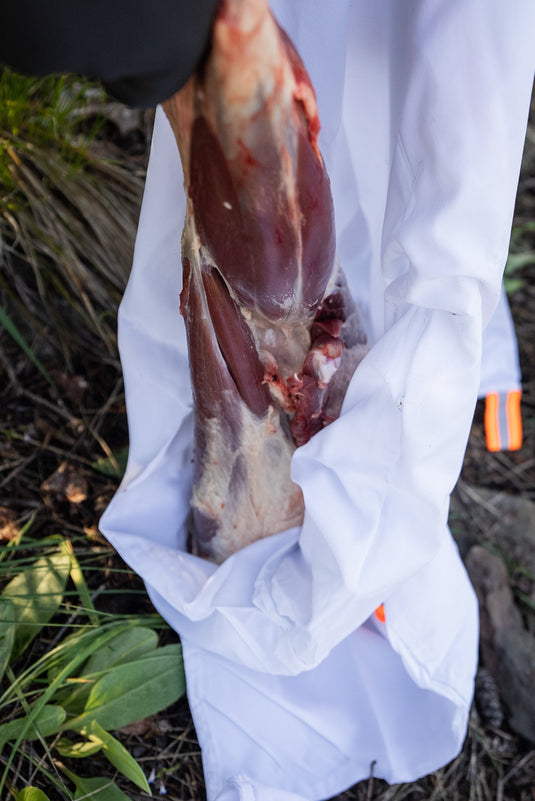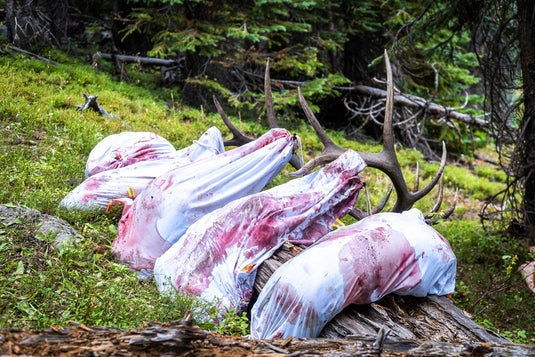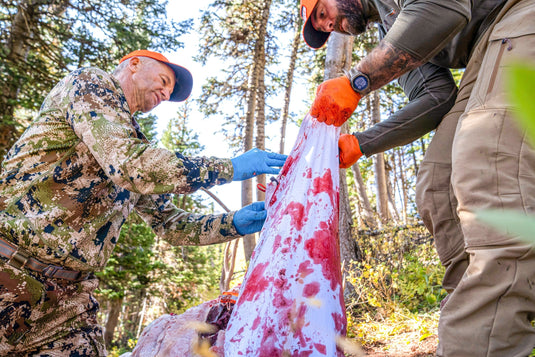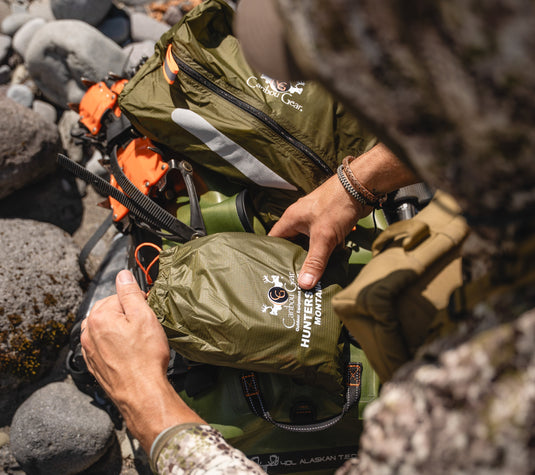Re-waterproofing your hunting gear, clothing and boots should be a regular part of your pre-season checklist. Before the next big hunt, take some time to get your gear cleaned, waterproofed and ready to rock.
What needs re-waterproofing? The most critical items include your rain gear, boots, softshells and anything else with a DWR (durable water repellent) finish – this can include hunting pants, gaiters and gloves. You may also consider washing and renewing the DWR finish on your sleeping bag and other down-filled gear.
The DWR finish on any piece of outdoor clothing will eventually fade. Even your rain gear, which has a waterproof membrane, relies on the DWR finish to allow that membrane to breathe and function properly. Remember when a piece of gear was brand new, and the water would bead up and roll right off the surface? That’s what we’re looking to renew.
As you prepare for a new season of adventures, here are a few tips for re-waterproofing your hunting gear, clothing, boots and even down-insulated items:
Rain Gear
How often you clean and re-waterproof your rain gear depends entirely on how much it has been used or how dirty it gets. If your rain gear stayed in your backpack for the majority of last season, you can probably run with it for another year. Blood, mud, sweat and body oils are all things that will impede that DWR finish. If your rain gear was heavily used last year or if it got significantly dirty, it’s probably time to wash it and renew that waterproof finish.
When washing rain gear, only use cleaning products that are designed specifically for garments with GoreTex or any other waterproof/breathable membrane. Follow manufacturers instructions when available. I use Nikwax products but there are a few others, including Gear Aid and Grangers, that are designed for outdoor gear. No matter which product you choose, follow the instructions carefully.
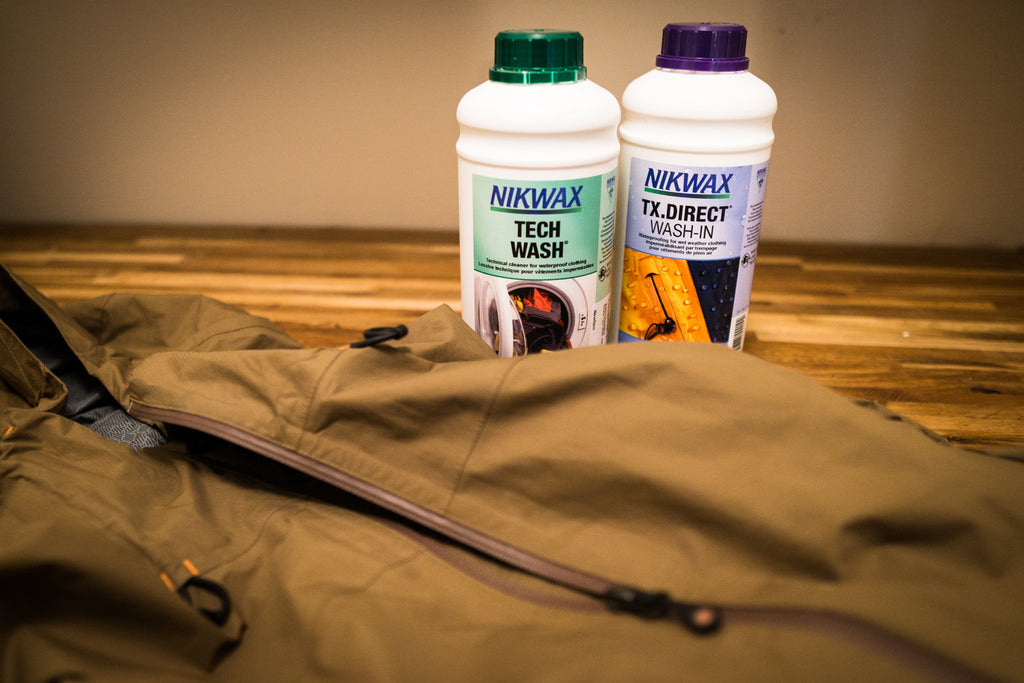
This process should begin with cleaning. I use Nikwax Tech Wash, which is a detergent that’s safe to use on rain gear. This cleans the blood and any other grime off of my hunting rain gear.
Once the rain gear is clean, it’s time to revive the waterproof finish. I use Nikwax TX Direct, which comes in a wash-in and a spray-on version. Again, no matter which re-waterproofing product you use, be sure to follow the instructions on the bottle for the best results.
When your rain gear is clean, dry and sporting a new DWR finish, store it in a cool, dark and dry place. In fact, one of the keys to longer lasting hunting gear is proper storage. I like to hang my rain gear – and all my hunting clothing – in a plastic wardrobe closet in the basement where it’s dust-free, temperature controlled and not subject to direct sunlight.
Softshells
Any hunting garment that isn’t a hard shell (rain gear) but has a DWR finish, gets lumped into the “softshell” category. This usually includes softshell jackets and many hunting pants. These are items that are water resistant, but do not have a waterproof/breathable membrane like GoreTex.
Like rain gear, the frequency with which you wash and re-waterproof your softshell gear depends on how much it has been used and how dirty it gets. Typically, I treat my rain gear once per year unless it gets very dirty on a foul-weather hunt. My softshells I tend to wash a bit more often. For example, hunting pants get bloody more often. They might need a wash after every hunt. Whenever that’s the case, go ahead and get them clean and give them a fresh coat of water-repellency.
Renewing the DWR on your softshells will allow precipitation to bead up and roll off, just like when the item was new. You might be amazed at how well a used piece of gear can perform when it’s clean and re-treated.
Just like rain gear, treating your softshell items is as easy as following the manufacturer’s directions or the instructions on the bottle. Again, I begin by washing the items with Nikwax Tech Wash, which is safe to use on technical outdoor apparel.
When the items are clean, I then renew the DWR with Nikwax Softshell Proof. This product is designed to renew that water-repellent finish on softshell gear. Like the TX Direct for rain gear, it comes in a wash-in and a spray-on version. There are also other options available from companies like Gear Aid and Grangers. The most important thing is to follow the instructions for whichever product you choose.
Once it’s clean, re-treated and totally dry, store it in a safe place along with your rain gear.
Hunting Boots
Your boots are undoubtedly one of the most important pieces of hunting gear you own. Boots can make or break a hunt. Wet feet, cold feet and blisters can end a hunt in a hurry. While you shouldn’t buy into the idea that fancy-schmancy hunting gear will make you a better hunter, having high-performing gear will keep you comfortable and in the field longer. And that certainly translates to more success. Sometimes, the best hunting weather is the nastiest weather. If you can stay focused and comfortably hunt through it, you give yourself and edge. Therefore, I’d argue it’s worth investing in quality hunting boots and taking very good care of them.
I wash and re-wax my boots after every single trip. Leaving mud, blood and other grime on your boots is corrosive. Keeping them clean and waterproof will allow them to last much longer. And just as importantly, it will keep your feet dry and comfortable on the next hunt.

I have a pair of Kenetrek mountain boots that I’ve hunted in for six consecutive seasons. Between scouting, guiding and my own personal hunts, they’ve probably seen close to 250 days of use. They are still in good shape and extremely comfortable. And they should be. An expensive pair of hunting boots is a big investment. And it’s one worth taking care of.
After every hunt, carefully clean your hunting boots. Start by removing the laces. Then rinse the boots with lukewarm water. If you have a utility sink in your basement or laundry room, that’s perfect. If you use the kitchen sink, just be sure and clean up carefully before your spouse sees it…speaking from personal experience here.
I will often use a boot-specific cleaning agent to get the boots very clean. Nikwax footwear cleaning gel is perfect for this. Scrub around the seams, crevices, and the tongue to get all that dirt and debris out.
When the boots are clean, it’s time to treat or re-waterproof them. Full grain leather boots like Kenetrek boots benefit from a wax or leather conditioning treatment. I always use Kenetrek Boot Wax. If you’re re-waterproofing a pair of synthetic boots, use a product that’s designed for that purpose. Nikwax Fabric and Leather proof is great for boots that have a combination of materials.
Before waxing my leather boots, I leave them out overnight to dry after being washed. When they are clean and totally dry, apply a liberal amount of boot wax and rub it in with your fingers. It’s a messy job, but you want to rub it in to all the corners and seams. If you live in a dry climate like we do here in Colorado, you may find that the leather will soak up a lot of wax. Continue applying wax until it’s saturated. Then, let the boots rest for a couple of hours to soak up as much as possible. Finally, take a clean rag and wipe off all the excess, bringing the boots to a nice polish.
Lastly, I’ll put the laces back on – this is a great time to check the condition of your laces. If needed, order a new pair now. Store your boots in a cool, dry place where they’re not in direct sunlight. I keep mine on shelves in the basement along with the rest of my hunting gear.

Accessories: Gloves, Hats & Gaiters
While we’re on this cleaning and re-waterproofing kick, check your small, accessory items like gloves, hats and gaiters. Any item that has a softshell exterior face, a waterproof membrane or a Windstopper-type material probably has a DWR finish that needs to be renewed occasionally.
These accessories are quick and easy to clean and re-waterproof. A little bit of effort can make a big difference when it means having warm, dry hands and extremities.
Like everything we’ve covered previously, begin with a wash. If you’re running a load of laundry with Nikwax Tech Wash already, throw in those gloves, hats or gaiters.
Once they’re clean, it’s time to renew the DWR finish. For small items like these, the spray-on treatments are quick and easy. I’ll apply Nikwax TX Direct to my gaiters and any other hard shells that have a waterproof membrane. On hats, gloves and other small softshell items, I’ll spray on the Nikwax Softshell Proof.
Usually when I’m running a load of laundry with other hunting gear items, it’s easy to do these accessories right alongside the rest.

Down Insulated Gear
Down-filled gear items like sleeping bags and puffy jackets can be the most intimidating pieces of gear to clean and treat. Folks are often afraid to wash these items for fear of ruining them. However, quality down gear should be cleaned on a regular basis. Just like your outerwear, down becomes dirty from body oils and extended use. This will inhibit its performance. Sleeping bags and jackets will eventually lose their loft. And the DWR finish on the exterior of these items will eventually wear away.
Down of course comes from waterfowl. So don’t be afraid to get these items wet. Just like a goose or duck constantly preens its feathers, your down needs to be cleaned too. Even gear with hydrophobic down can and should be cleaned. There are just a few things you’ll need along the way.
The most important piece of equipment is a large, front-loading washing machine. Never use a top-loading washer on your down items. They can get snagged in the agitator and become damaged. If you don’t have a front-loader at home, you can go to a local laundromat.
Next, you’ll need a down-safe detergent and DWR treatment. I use Nikwax Down Wash and Down Proof for these purposes. But again, there are similar products from Grangers and others. First, check to see if the gear manufacturer has any specific instructions or recommendations. Then, carefully follow the instructions on the cleaning and treatment products you choose.
If you’re using a wash-in DWR treatment, run that cycle through the washing machine immediately after the initial cleaning wash. If you’re using a spray-on DWR treatment, you can wait and do that after the item is dry.
When it comes to down-insulated gear, the washing is actually the easy part. The drying is more difficult. Really, it is just time consuming. Because once your jacket or sleeping bag is clean, you’ll need to tumble dry it with no heat or very low heat until it is completely and totally dry. This takes a long time.
I place the clean item in the dryer with a few tennis balls or dryer balls to help break up the wet clumps of down. If your gear has Velcro closures, carefully close them up. Otherwise, tennis balls can hang up on the Velcro and cause damage. Start the dryer on a delicate setting with no heat or very low heat. Constant heat from the dryer vent can damage delicate down items.
Every half hour or so, I’ll take the sleeping bag or jacket out of the dryer and shake it out. Lay it on a clean floor and run your fingers across the item to break up the clumps. Return the item to the dryer and repeat this process until the gear is completely dry and fluffy. You should notice a significant improvement in loft, especially if you hadn’t cleaned the item in a long time. Any wet clumps remaining in the item could mold and ruin the gear.
When your gear is totally dry, store it hanging in a closet or in a cool, dry place. Sleeping bags should never be stored compressed in a stuff sack. If you don’t have room to hang them, keep them in a large, breathable storage bag that isn’t too restrictive. Most sleeping bags come with a large storage sack. If you don’t have one, pick up one of our Medium Single-Quarter game bags. At 28”x48” it’s the perfect size for long-term sleeping bag storage.
Ready for the Next Hunt
Perhaps the next-best thing to going hunting is planning a hunt. As you prepare for that next big adventure, have fun getting your hunting gear in order. If you have questions or need help getting equipped for your upcoming trips, please don’t hesitate to reach out!

By Ryan McSparran
Ryan is an outdoor writer based in Colorado, and is proud to be a part of the team at Caribou Gear.

